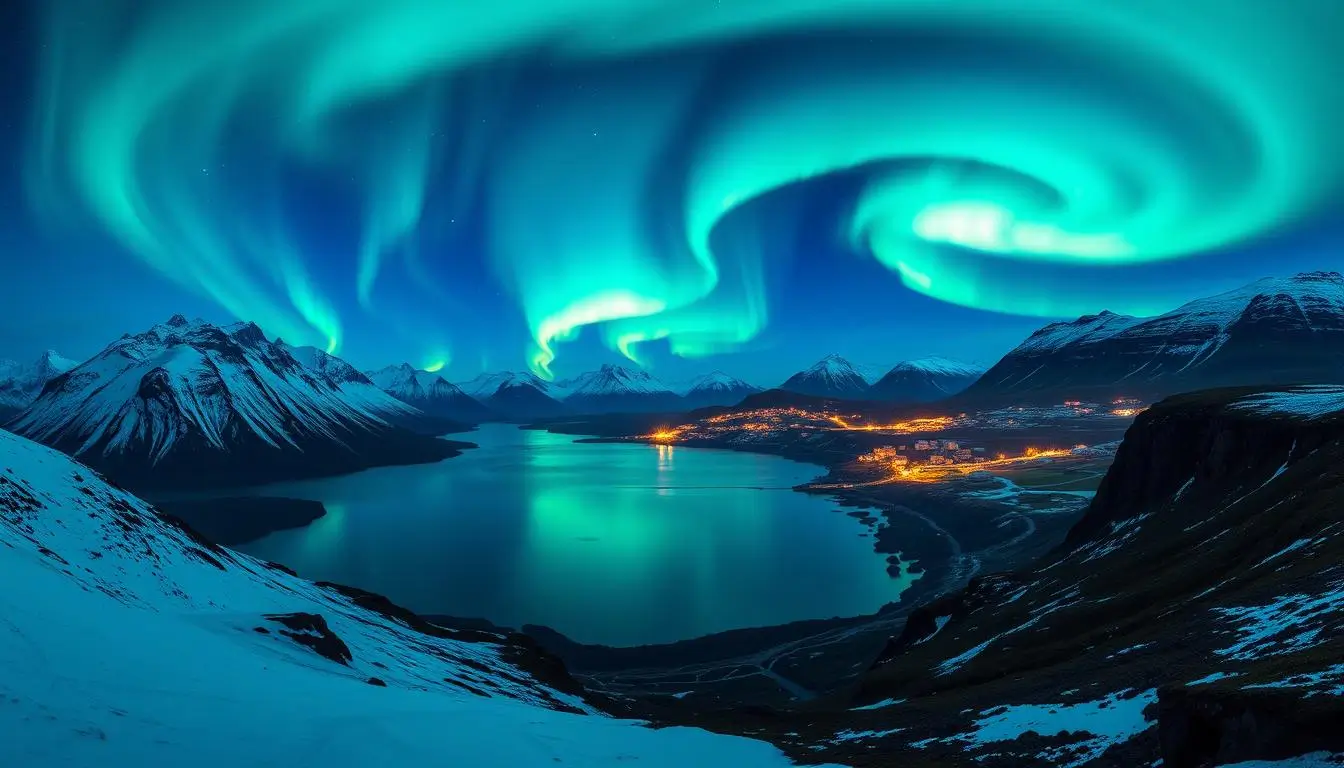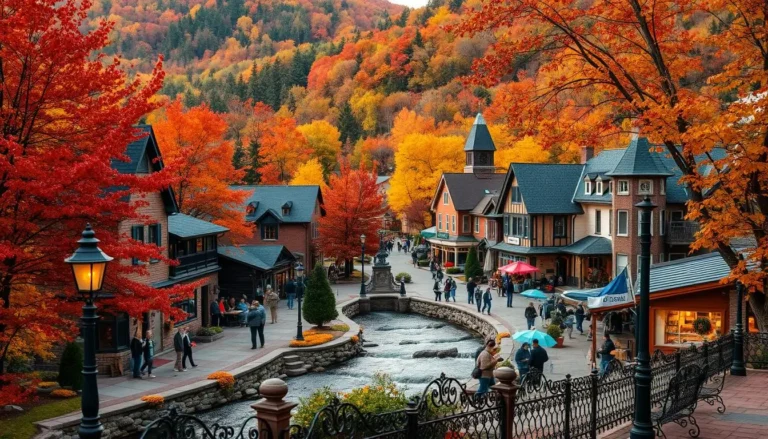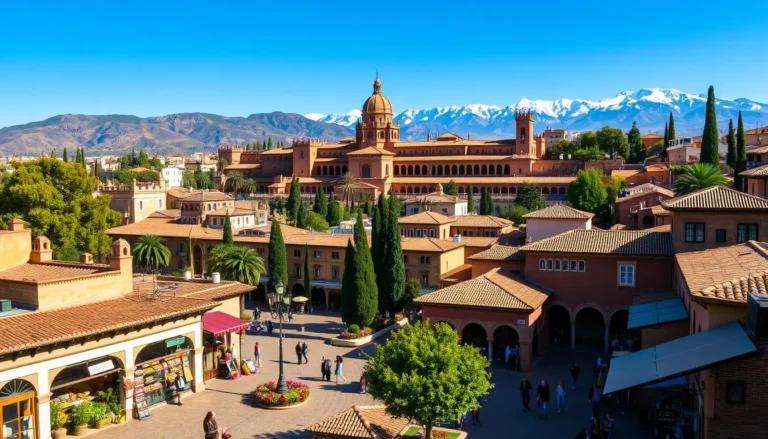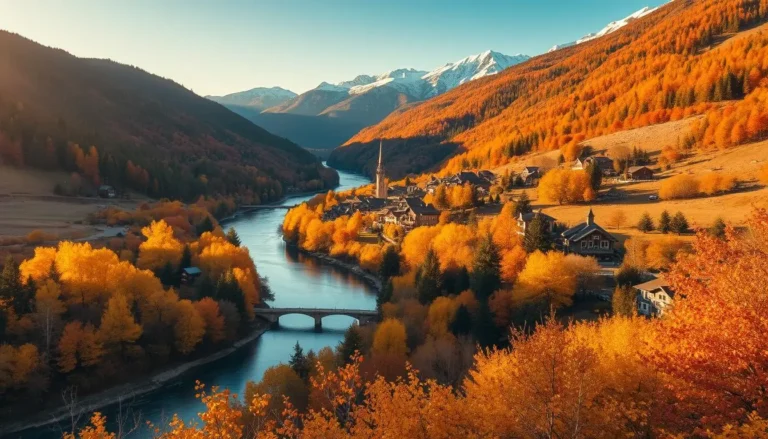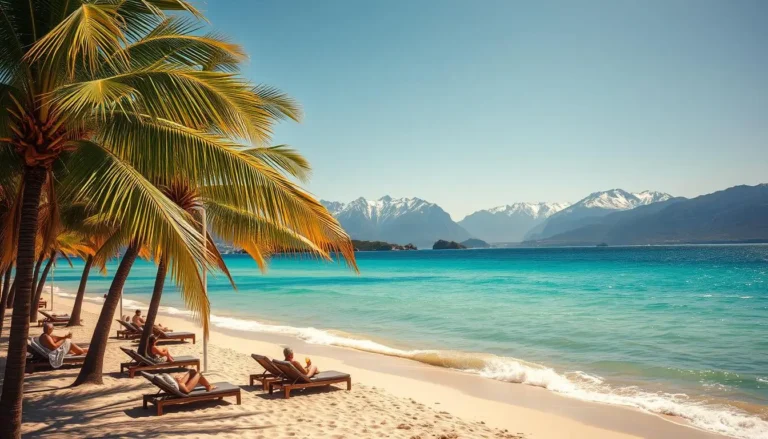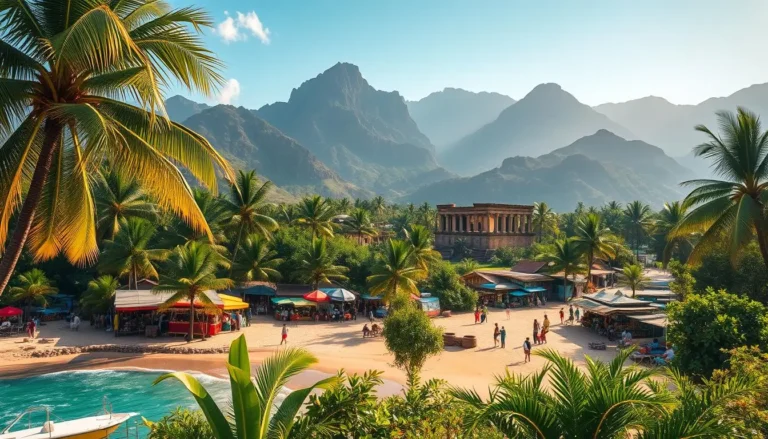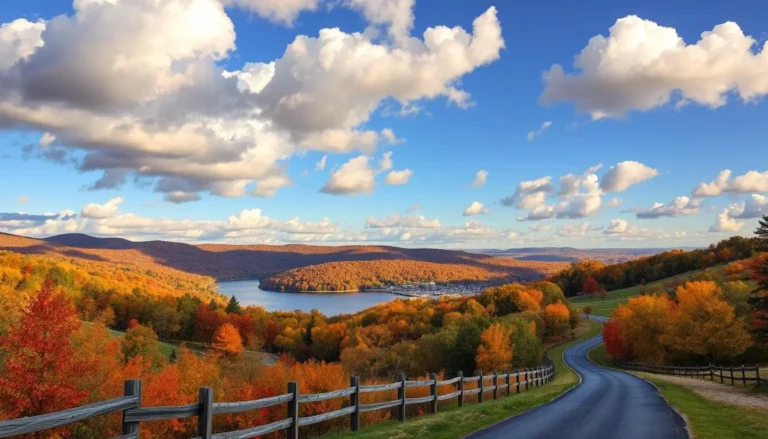Discover the best time to see northern lights in iceland
Imagine standing under the vast, dark sky of Iceland. You’re surrounded by nature’s serene beauty. The Northern Lights dance above you. This is a dream for many.
The Northern Lights, also known as the Aurora Borealis, happen when the sun’s charged particles meet Earth’s magnetic field.
best time to see northern lights in iceland is an adventure. knowing the optimal viewing times is key.
Key Takeaways
- Peak season for viewing the Northern Lights in Iceland.
- Best months for clear skies and optimal viewing conditions.
- Tips for maximizing your Northern Lights experience.
- How solar activity affects visibility.
- Planning your trip for the best viewing opportunities.
Table of Contents
Understanding the Northern Lights Phenomenon
Seeing the Northern Lights in Iceland is a unique experience. It mixes natural beauty with scientific wonder. The Aurora Borealis, or Northern Lights, dancing in the sky is a sight that amazes everyone.
What Causes the Aurora Borealis
The Aurora Borealis, or Northern Lights, happen when charged particles from the sun meet Earth’s magnetic field and atmosphere. This meeting creates the colorful lights we see in the sky, mainly at high latitudes.
Why Iceland is an Ideal Viewing Location
Iceland’s unique geography makes it perfect for seeing the Northern Lights. Two main reasons make it a favorite spot for Aurora fans.
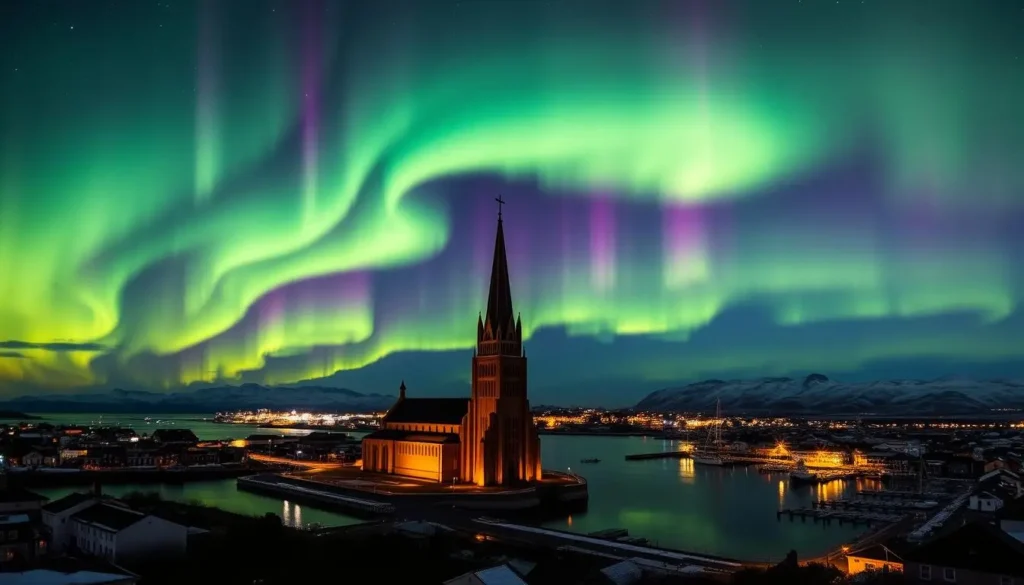
Geographic Advantages
Iceland is close to the Arctic Circle. This puts it under the Aurora Oval, where the Northern Lights are most active. This location makes clear sightings more likely.
The country’s sparse population and little industrialization mean less light pollution. This allows for clearer views of the night sky and the Iceland Northern Lights spectacle.
The Best Time to See Northern Lights in Iceland
To see the Northern Lights, knowing when is best is key. Iceland, near the Arctic Circle, is a top spot for this natural wonder.
Prime Season: September to March
The best time to see the Northern Lights in Iceland is from September to March. Nights are dark, perfect for viewing. September and October are great because it’s not too cold and there are fewer people around.
Peak Months for Aurora Activity
The months with the most Aurora activity are December and January. These months have the longest, darkest nights. It’s a special time to see Iceland’s winter landscapes lit up by the Northern Lights.
Timing Your Visit for Optimal Viewing
When you visit is important for the best view. Keep these tips in mind:
Ideal Hours of the Night
The Northern Lights are most active from midnight to 3 am. Be outside during these hours for the best view. Many tours are set up for these times.
Length of Stay Recommendations
Plan to stay for at least 4 to 5 days. This gives you more chances to see the Northern Lights. It also helps if the weather is bad on some nights.
By knowing the best times and conditions, you can plan your trip to Iceland. This way, you’ll have a great chance to see the Northern Lights.
Weather Conditions and Visibility Factors
Planning a trip to see the Northern Lights in Iceland? Knowing about weather is key. The Northern Lights Iceland show depends on many things in the air.
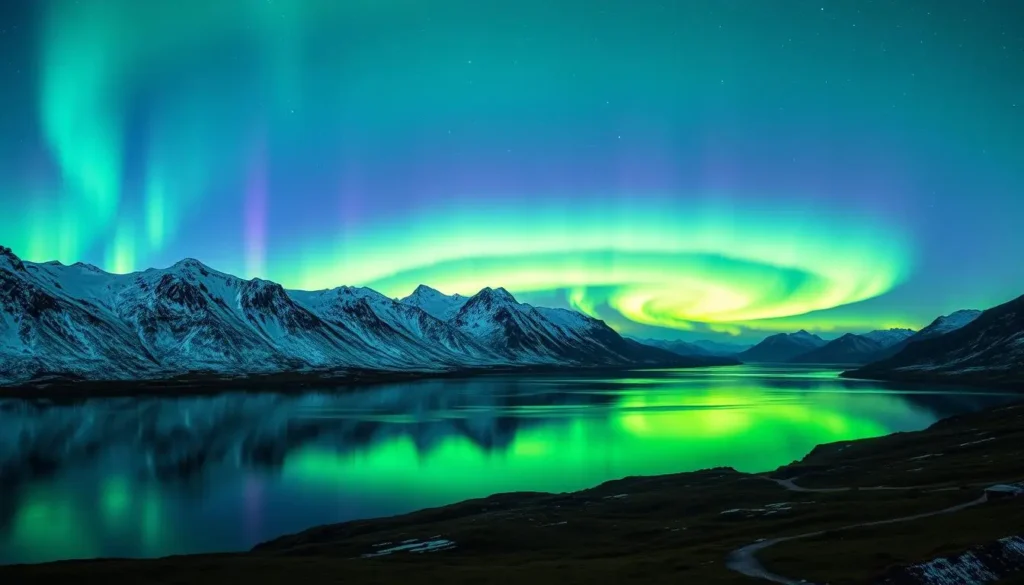
Clear Skies and Solar Activity
Seeing the Northern Lights needs clear skies. Clouds can block your view, so check the forecast first. Also, how active the sun is affects how bright and often the lights appear.
Monitoring Aurora Forecasts
To see the Northern Lights, watch the aurora forecasts. Apps and websites give updates on when to watch. This helps plan your viewing times.
How Moon Phases Affect Visibility
The moon’s phase can change how well you see the Northern Lights. A full moon makes the sky too bright, making the lights harder to see.
Using Weather Apps and Resources
Weather apps and resources can help your Northern Lights experience. Here are some good ones:
- Aurora Forecast
- Dark Sky
- The Photographer’s Ephemeris
Stay updated on weather and aurora activity. This way, you’ll have a better chance to see the amazing Northern Lights tour Iceland.
Top Locations in Iceland for Northern Lights Viewing
For the best Northern Lights experience, check out Iceland’s top spots. The country’s landscape and low light pollution are perfect for seeing this natural wonder.
Reykjavik and Surrounding Areas
Reykjavik, Iceland’s capital, is a great place to see the Northern Lights. The Reykjanes Peninsula outside the city has darker skies for better views.
South Coast Viewing Spots
The South Coast is known for its stunning landscapes. Places like Vik and Skaftafell are perfect for watching the Aurora.
North Iceland Aurora Destinations
North Iceland is famous for its dark skies. It’s a top spot for seeing the Northern Lights.
Akureyri and Lake Myvatn
Akureyri, Iceland’s second-largest city, and Lake Myvatn area are great for viewing. They offer excellent conditions and unique landscapes.
Remote Locations in the Westfjords
The Westfjords have some of Iceland’s darkest skies. They’re ideal for those who love the Northern Lights and are willing to explore.
| Location | Light Pollution Level | Aurora Visibility |
| Reykjavik | Moderate | Good |
| Westfjords | Low | Excellent |
| Akureyri | Low | Excellent |
“The Northern Lights are a natural phenomenon that can be enjoyed in various locations across Iceland, each offering a unique experience.” – Northern Lights enthusiast
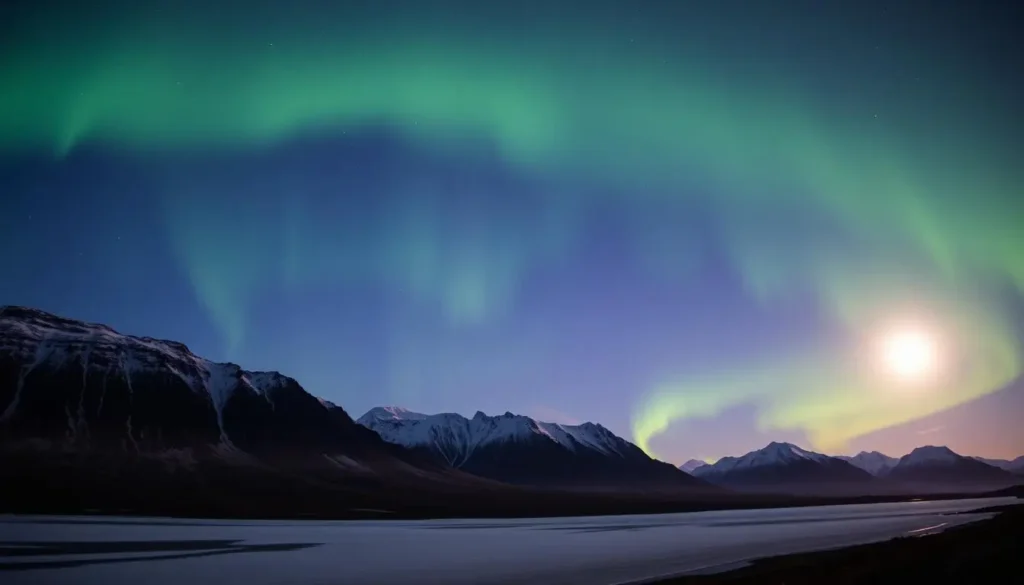
Northern Lights Tour Iceland: Options and Experiences
There are many ways to see the Northern Lights in Iceland. You can choose from guided bus tours to boat excursions. These tours aim to give you the best chance to see the Aurora Borealis.
Guided Bus Tours from Reykjavik
Guided bus tours from Reykjavik are easy to get to. They also visit other cool spots. You’ll learn a lot from the guides.
Boat Tours for Unique Perspectives
Boat tours offer a special view of the Northern Lights. You’ll see them from the water. It’s a unique and unforgettable experience.
Private and Specialized Photography Tours
Photography fans should try private tours. They focus on getting the best Northern Lights photos. You’ll learn about the best spots and techniques.
Multi-Day Tour Options
Multi-day tours let you explore more of Iceland. They’re great for a deeper experience.
Pricing and What’s Included
Prices vary by tour type and length. Make sure to check what’s included. This can be meals, places to stay, and more.
Planning Your Iceland Northern Lights Trip
To see the Northern Lights in Iceland, you need to plan well. A good plan means you’ll be in the right spot at the right time. This way, you won’t miss this amazing natural show.
Accommodation Considerations
Choosing the right place to stay is key for a great Iceland Northern Lights Tour. Look for spots with little light pollution for clearer views.
Hotels with Aurora Wake-Up Calls
Some hotels will wake you up when the aurora is out. This way, you won’t miss the show.
Rural Guesthouses and Cabins
Staying in rural areas can give you darker skies. It also offers a more real experience.
Transportation Options
Getting around is easier with a car or a guided tour. They can take you to the best spots to see the lights.
What to Pack for Winter in Iceland
Winter in Iceland is cold. So, pack warm clothes. Wear layers to stay cozy during long nights of watching the lights.
Essential Cold Weather Gear
Make sure to bring thermal clothes, waterproof jackets, and warm boots. They’ll keep you safe from the cold.
Combining Northern Lights with Other Winter Activities
Iceland’s winter is full of amazing sights and activities. You can see the Northern Lights and enjoy other winter fun. This makes your trip even more special.
Ice Cave Explorations
Exploring ice caves is a unique adventure. These caves form in glaciers during winter. Guided tours let you see the stunning blue hues and ice designs up close.
Glacier Hiking and Hot Springs
Glacier hiking is thrilling for the bold. It lets you see Iceland’s icy beauty. Then, unwind in a natural hot spring, like the Blue Lagoon.
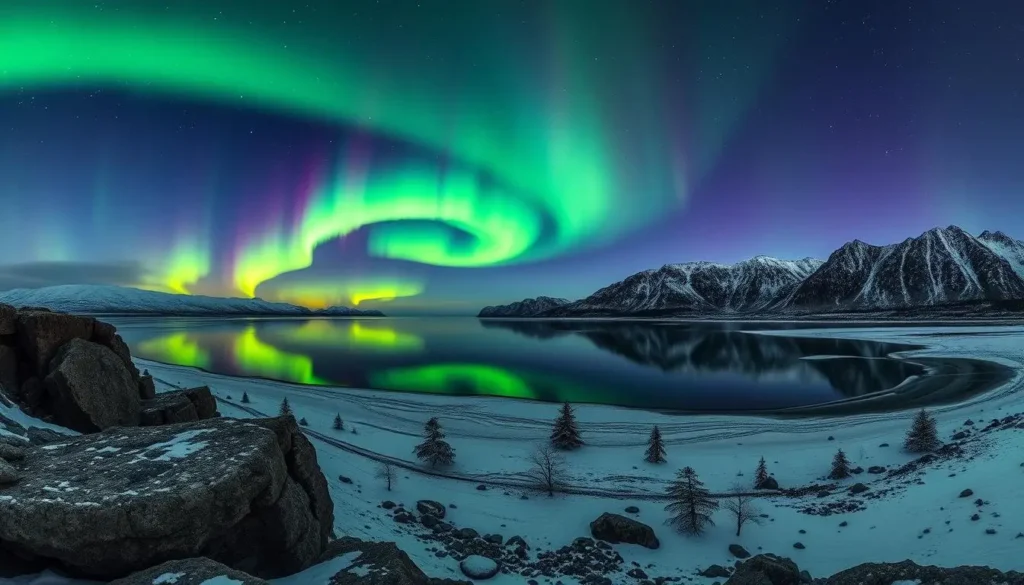
Winter Festivals and Events
Iceland has cool winter festivals. They celebrate with music, food, and culture. Joining these festivals makes your Northern Lights trip unforgettable.
Conclusion: Making the Most of Your Iceland Northern Lights Experience
Planning your trip to see the northern lights in Iceland? Timing and preparation are crucial. The best time to see the aurora borealis is from September to March. Peak months offer the highest chances to witness this natural wonder.
For a better experience, think about joining an Iceland northern lights tour. These tours take you to the best spots and offer expert advice. Whether it’s a guided bus tour from Reykjavik or a boat tour for a different view, they can help you see the northern lights in all their beauty.
Combine your northern lights adventure with other winter activities for an unforgettable trip. Activities like ice cave explorations or glacier hiking add to the excitement. With good planning and the right guidance, you’re set for an amazing northern lights adventure in Iceland.
FAQ
What is the best time to see the Northern Lights in Iceland?
The best time to see the Northern Lights in Iceland is from September to March. The peak months are December, January, and February.
What are the ideal weather conditions for viewing the Northern Lights?
Clear skies and high solar activity are best for viewing the Northern Lights. Check aurora forecasts and weather apps to plan your trip.
How do moon phases affect Northern Lights visibility?
A new moon phase is best for viewing the Northern Lights. A full moon can make the sky too bright and reduce visibility.
What are the top locations in Iceland for Northern Lights viewing?
Top locations include Reykjavik and the South Coast. Also, North Iceland and remote Westfjords spots like Akureyri and Lake Myvatn are great.
What types of Northern Lights tours are available in Iceland?
You can choose from guided bus tours, boat tours, private photography tours, and multi-day tours. Each offers a different experience and price.
What should I pack for a winter trip to Iceland to see the Northern Lights?
Pack warm clothing, waterproof jackets, and sturdy boots. This gear will keep you comfortable and happy during your trip.
Can I combine Northern Lights viewing with other winter activities in Iceland?
Yes, you can see the Northern Lights and enjoy ice cave explorations, glacier hiking, hot springs, and winter festivals.
What are the benefits of booking a guided Northern Lights tour in Iceland?
Guided tours take you to the best spots, offer expert knowledge, and make your experience easy. This increases your chances of seeing the Northern Lights.
Are there any specific accommodations that offer Northern Lights wake-up calls?
Yes, some hotels offer wake-up calls when the Northern Lights are visible. This ensures you don’t miss the display.

